Building a Paul Sellers style Workbench
Why Do This?
A couple of years ago, I took up woodworking as a side hobby. There are a number of reasons that I decided to focus primarily on hand tools instead of power tools, but one reason is that hand tools require a two-way communication between the artificer and artifact. There's no brute-forcing the wood to your whims, it'll either break on you or laugh in the face of your flailing efforts. Paying attention to the direction of the grain, feeling the scraping vibration of a plane's blade across a face, taking in the tones coming from the interface between metal tool and wood piece are all ways of listening to the material. It doesn't hurt either that it's a good excuse to be and stay physically active!
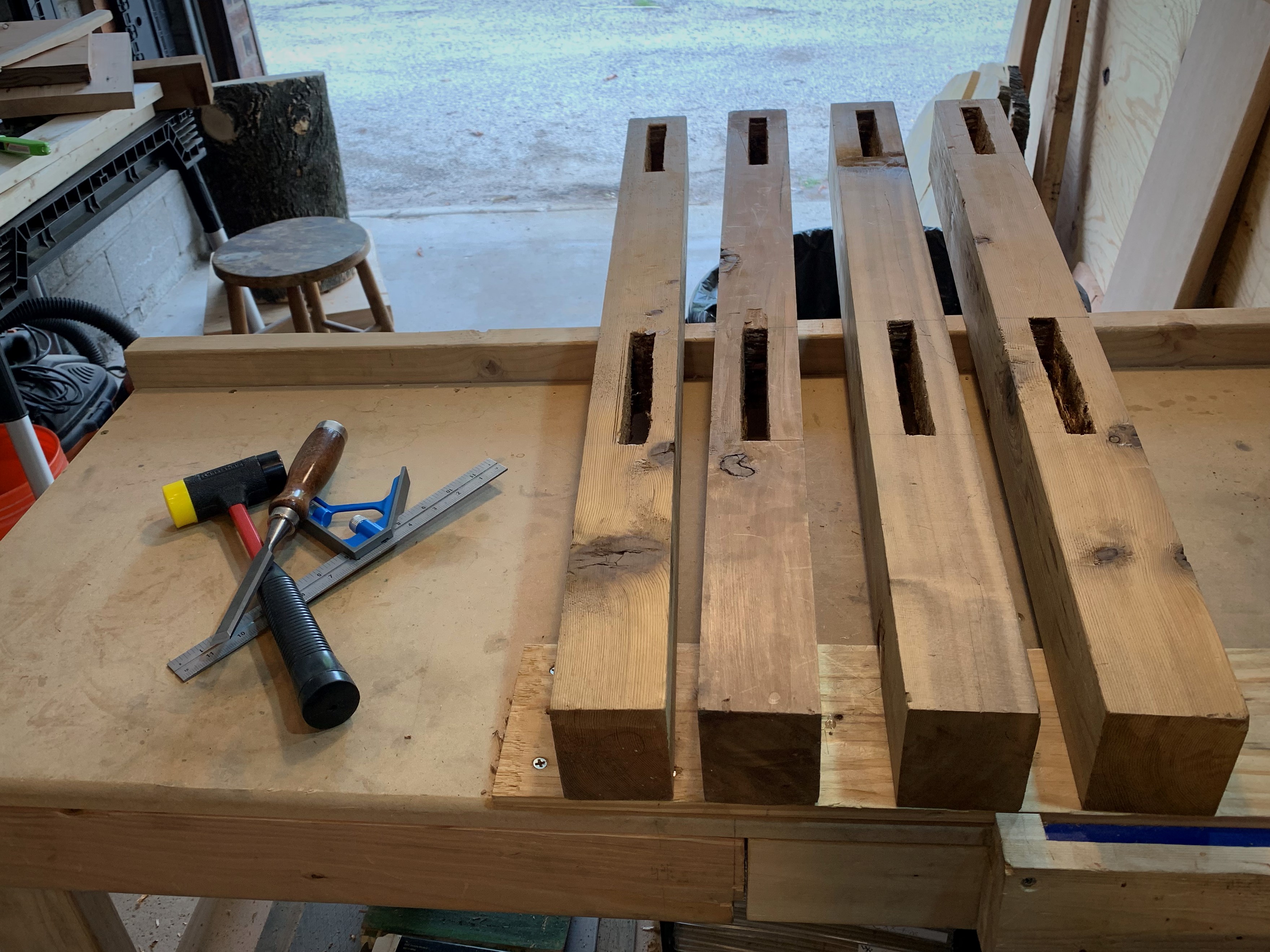
Until I'd started down this path, it had been a long time since the last time I'd really done any serious wood or carpentry work. There's so much to explore and learn, but where to start?
Watching and Learning
It shouldn't surprise anyone reading this that YouTube was a great resource. In particular, YouTube was the gateway for me to discover the work of Paul Sellers. Mr. Sellers describes himself as a "Lifestyle Woodworker", but that's not really an accurate nor complete description of the man. 
With a gentle voice and with a soft-spoken tendency, Sellers positively radiates passion and enthusiasm for not just his craft, but for sharing it with the world. His YouTube channel is an incredible fount of woodworking knowledge - much of which is increasingly difficult to discover anywhere else. To avoid making this entire post about Mr. Sellers, I'll complete the establishment of his bona fides by noting that his work has been includes a White House commission from President Obama for the Cabinet Room, so I think it's safe to say this guy knows his stuff.
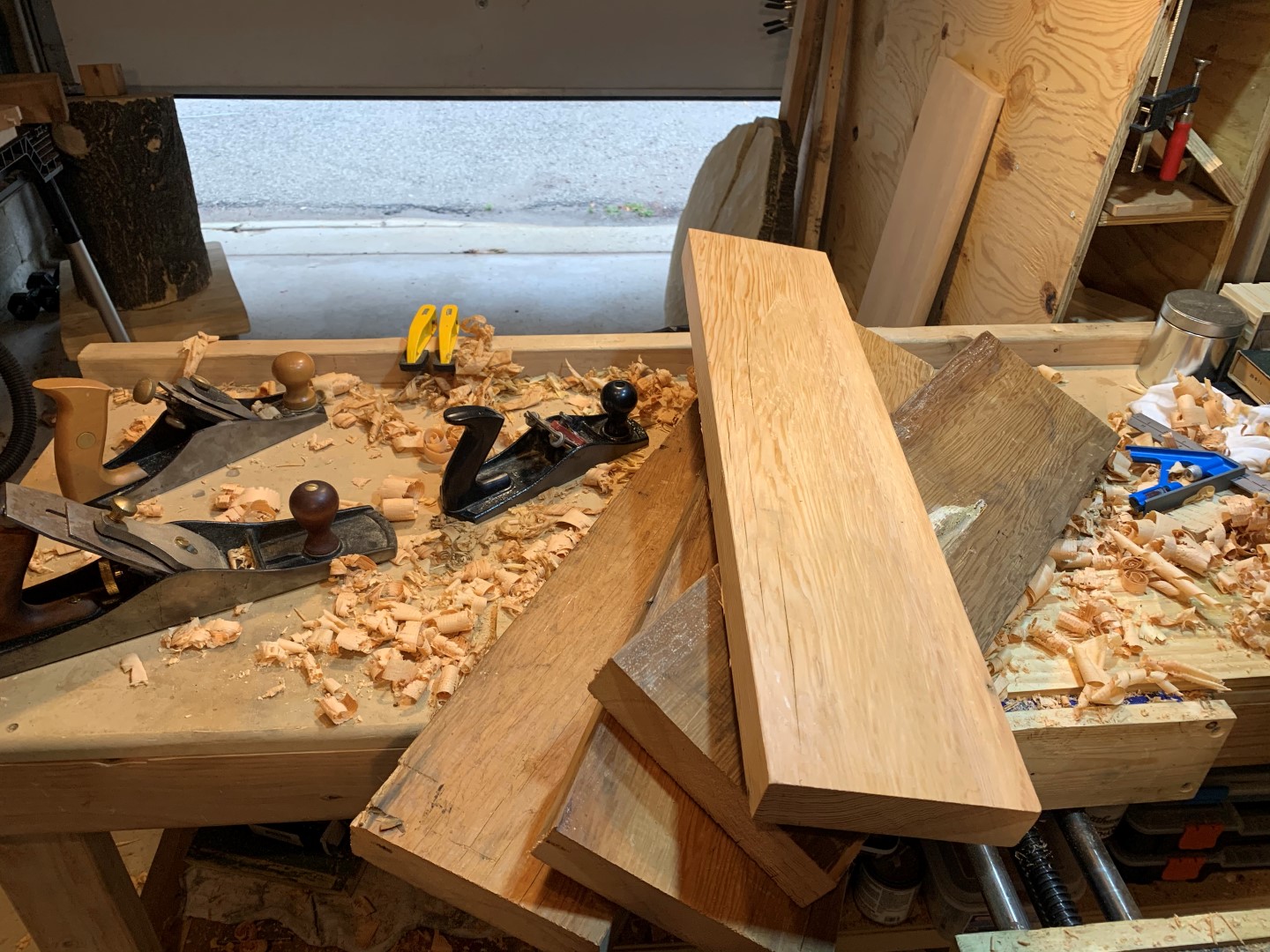
Garage Workshop Woes
Back home in my much more mundane tale, I was starting to build out my tiny little garage workspace when I realized that I was in dire need of a stable work surface - a workbench. I had picked up a cheap portable contractors' workbench from my local hardware store, but it wasn't built for the things I needed it to do and it was clear that if I wanted to get serious about using hand tools I would need a better work surface. I had been watching Sellers' How to Make a Workbench video series and I felt inspired by him - I could do this!
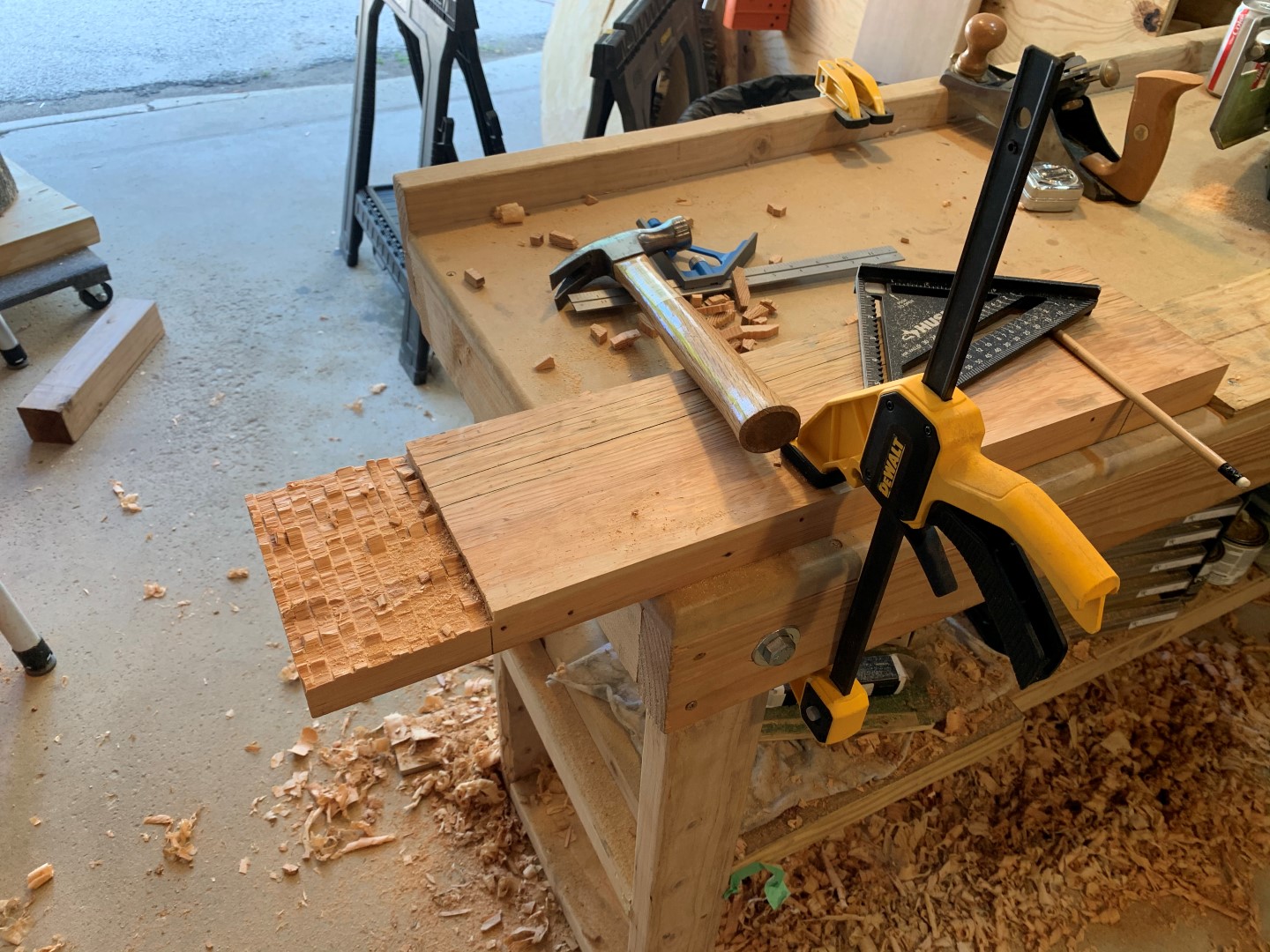
Except... I couldn't, really. While I never really doubted that I could eventually build the workbench I wanted, one thing became apparent that first summer: I needed to do some serious levelling up before I would be ready to take on this project. Summer gave way to Fall and Winter, then back into another yearly cycle of seasons as I practiced and learned.
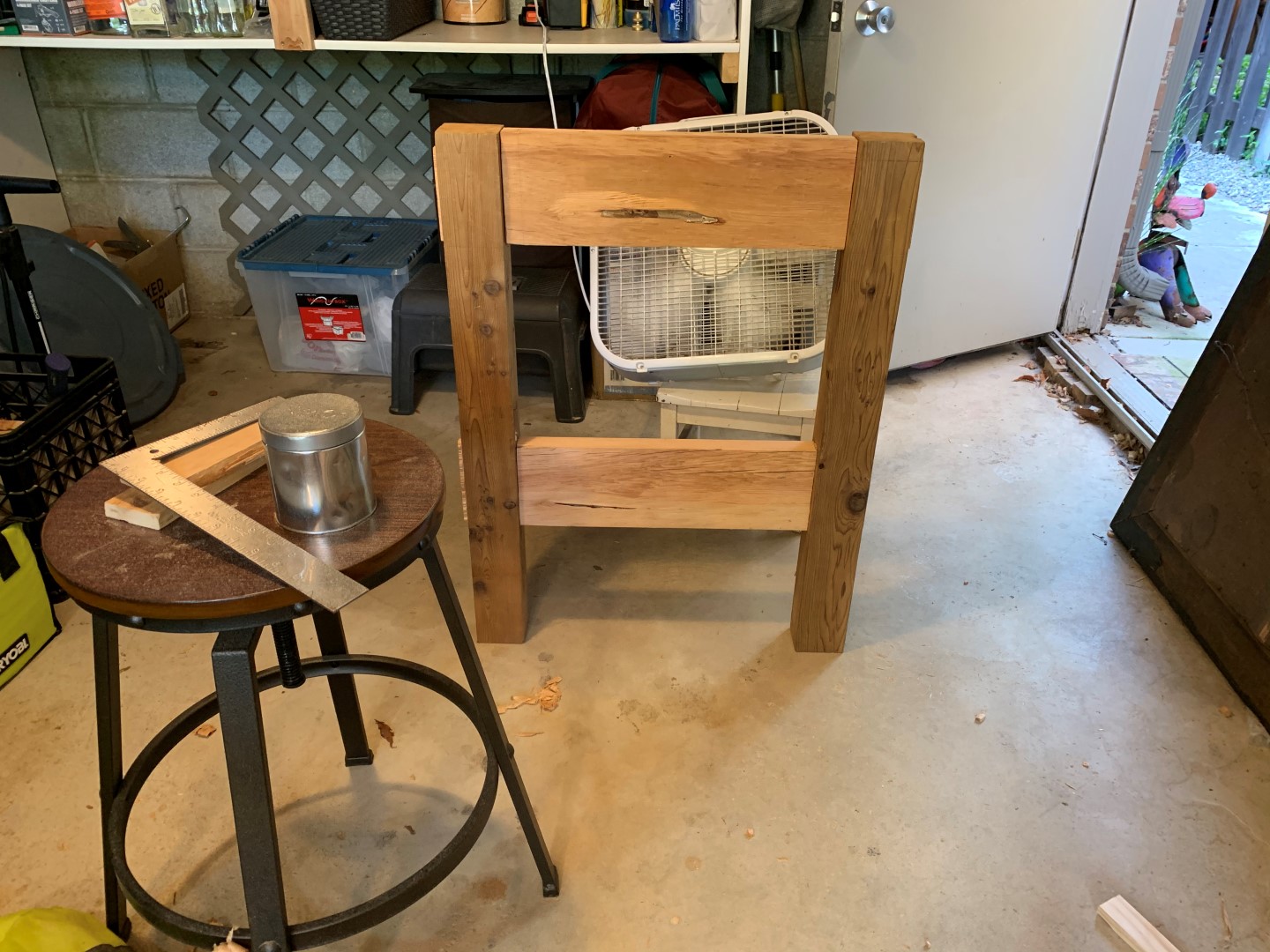
The Project Begins in Earnest
Coming up on this past Summer and Fall of 2020, I had had a very productive Spring, and was feeling confident enough that I wanted to try again to build this workbench. Why was I so confident? It wasn't because I felt my skills were superior to the task, it was because I was going to build it as part of a class taught by the great folks at the Rebuilding Exchange! The access to material, tools, and knowledgeable instructors offered by their their classes are perfectly justifiable reasons to be feeling optimistic. Fortunately though, my initial, pie-in-the-sky optimism was quickly given a well-needed dose of reality.
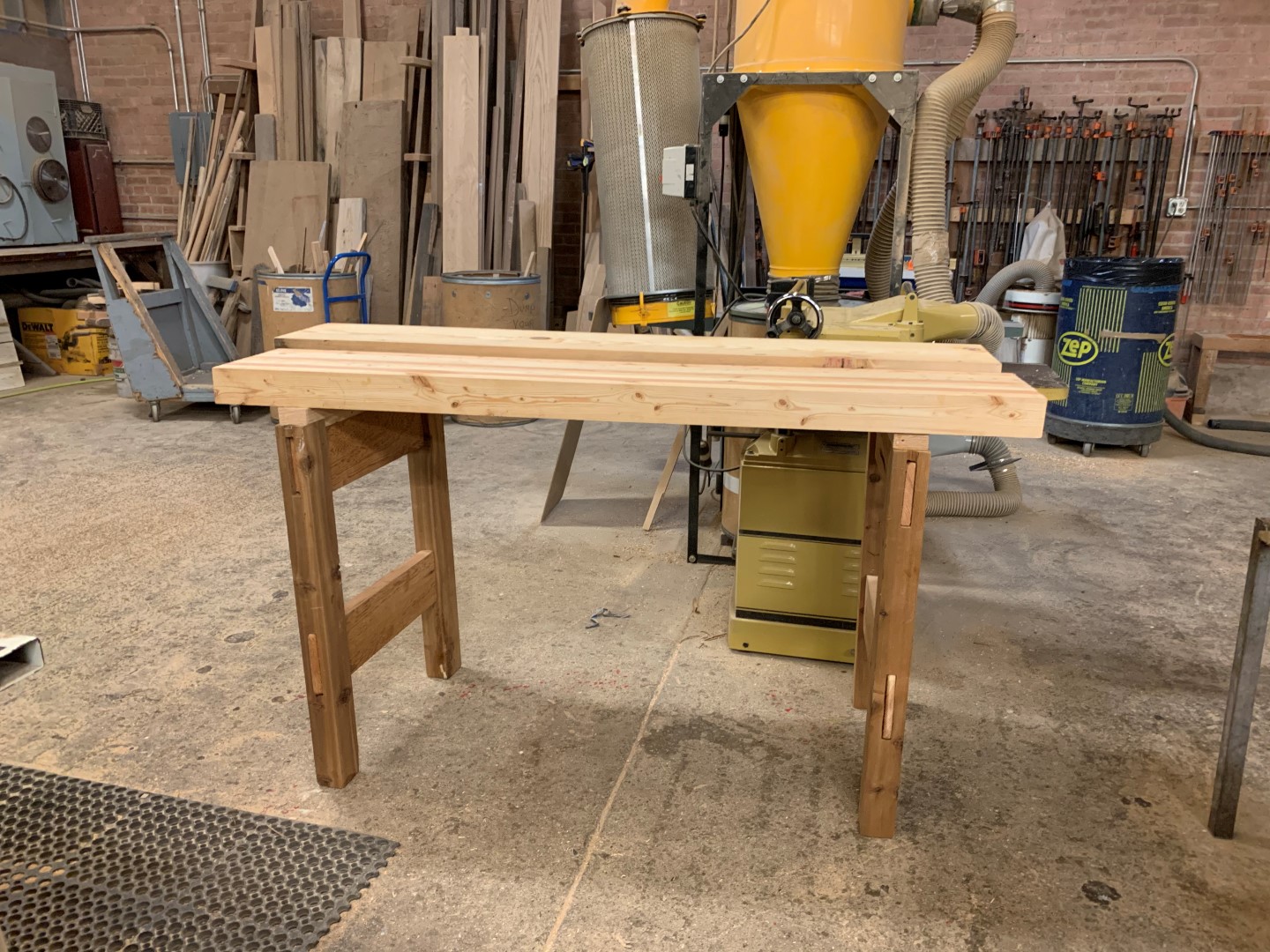
Reality Check
As I started communicating my plans and ideas to the instructor, it became apparent that I hadn't thought through a great many aspects of the design and construction process. It was clear that there wouldn't be nearly enough class time to complete the work needed. I needed to split up the work - minding dependencies and priorities - to make best use of my class time in the shop. This was one of the areas I actually felt well equipped to handle - a lifetime of Civ games along with a professional career involving resource allocation and scheduling was finally of some practical use in the world! I came up with a work plan that fit the schedule and went to work. In addition to that, I found the choice of wood (Cedar) tended to splinter and crack very easily if care wasn't taken (guess how that was discovered?). Practical concerns like this weren't always avoidable since I had to work with what I had, but neither was that an excuse for recklessness.
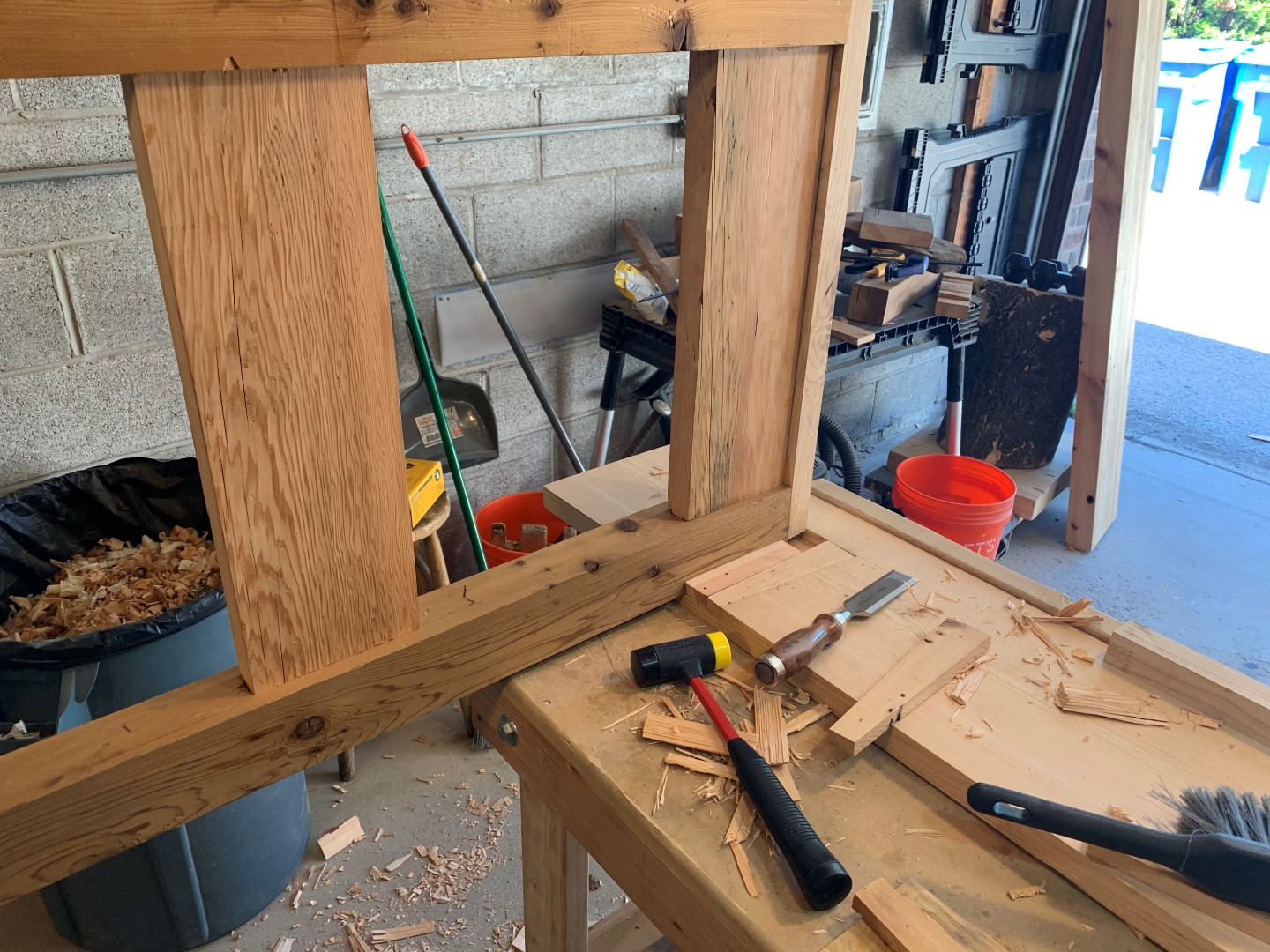
This was one of the parts of the process where I learned some very key lessons, made possible by the excellent teaching staff in my class. There was technical learning on how to use tools, techniques, etc. I learned how to the understand - and accept - that you are going to make mistakes, and that it is okay - anything is fixable. Understanding that sometimes the best way to fix a mistake is to do nothing and accept that it happened. [NB: This may sound familiar to any tech folks out there in the audience.]
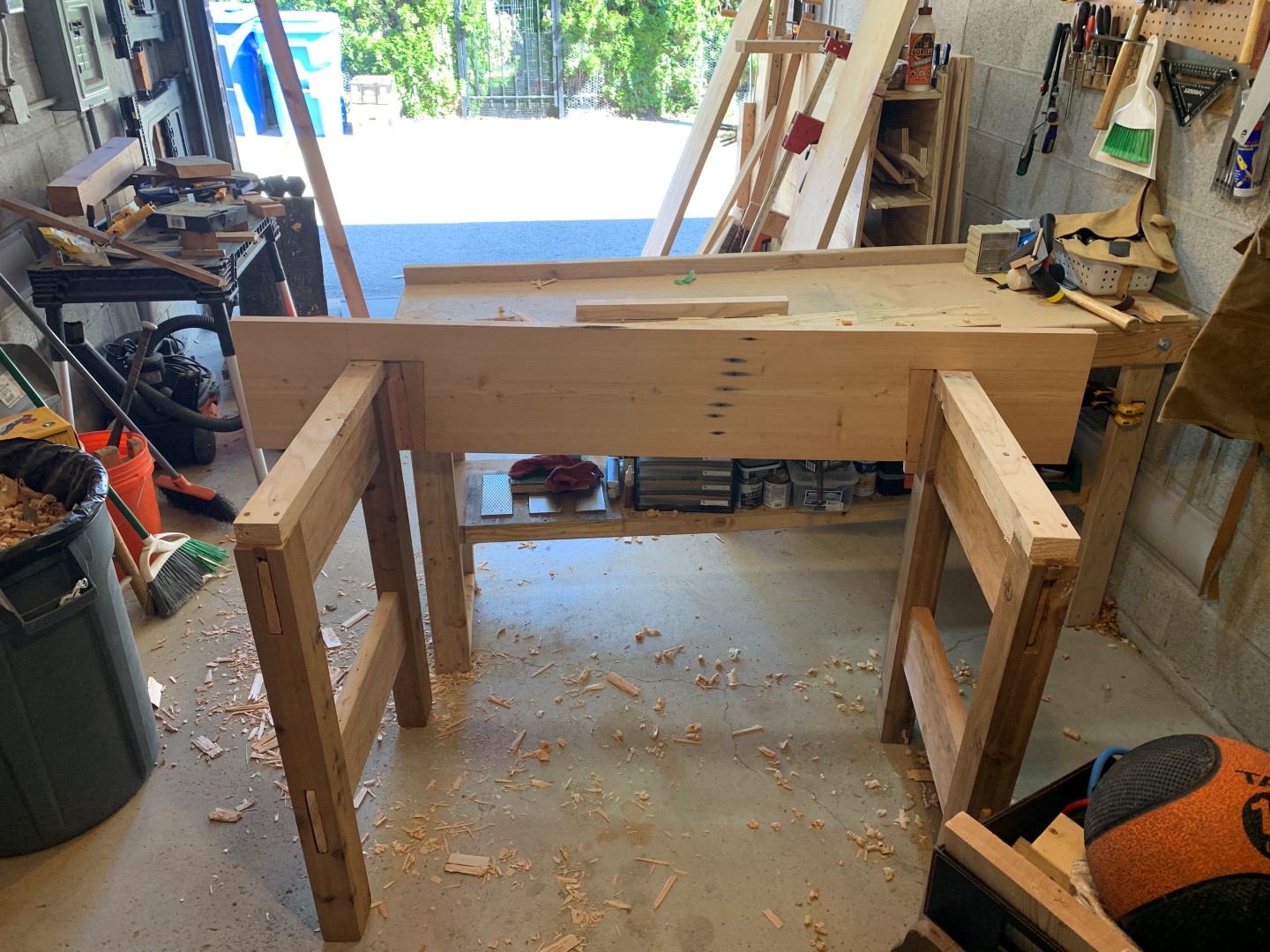
Learning How to Change
Ironically, the lesson that stands out the most to me from the experience has nothing to do really with woodworking. Being unfamiliar with the workbench plans, there was resistance to the design from the teaching staff. For example, one area of pushback was for wanting to form the benchtop by laminating the wide faces together. The reasoning behind the resistance was understandable, but I knew that this was something I couldn't change if I wanted to achieve my vision of a Paul Sellers-style workbench. Without the contrast of this with later compromises made in construction, I wouldn't have had the perspective to know not to push back at proposed changes.
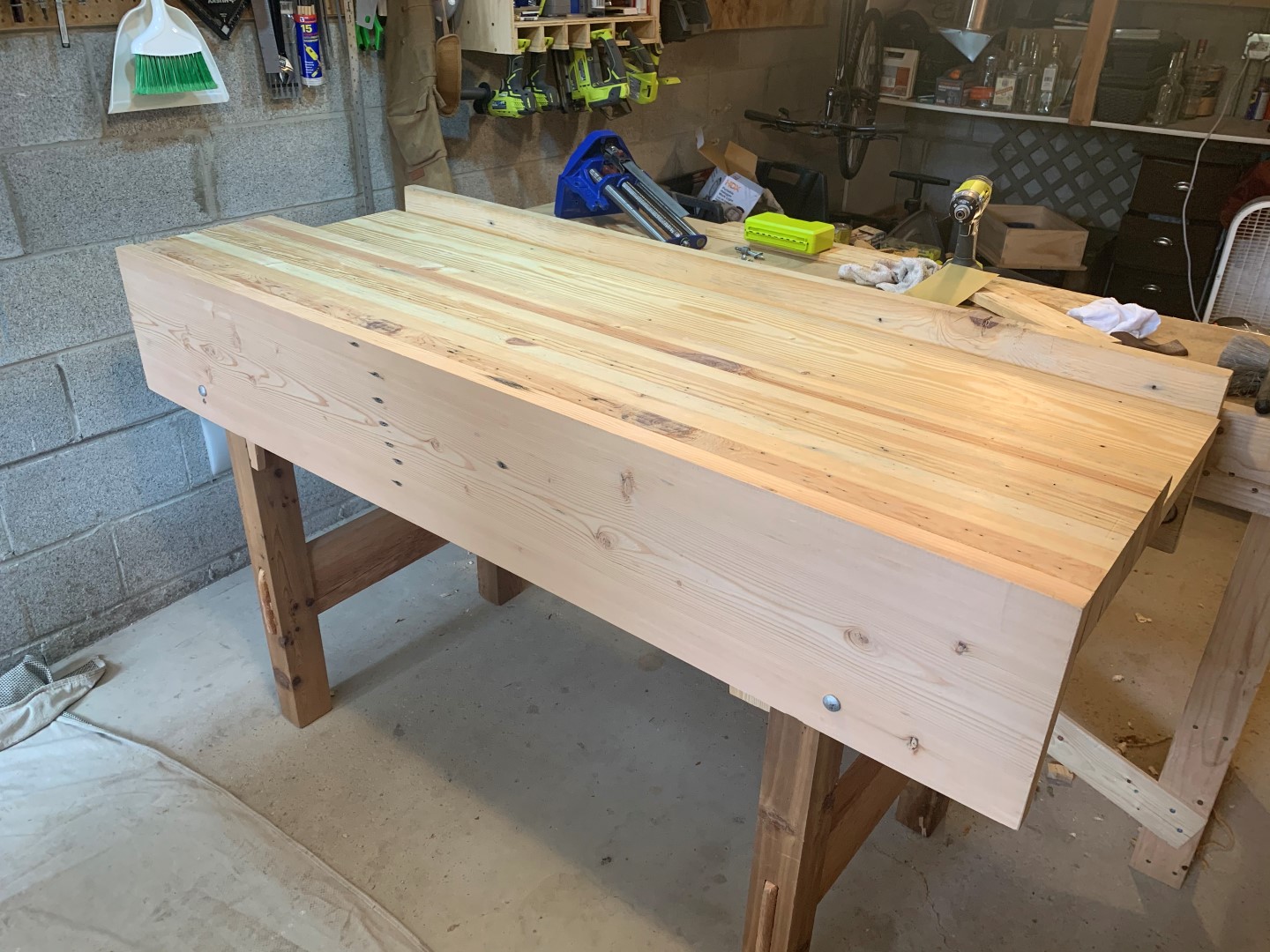
Some Assembly Required
After weeks of labor, dozens of hours of reviewing YouTube videos, countless splinters, and at least a few cuts, the workbench was finally completed. In the final reckoning, I constructed the workbench top, the wellboard, and the two side aprons in my class, building the legs and performing assembly and finishing in my garage workshop. Although it can be disassembled with a few bolts and screws, the castors I installed in the legs have so far precluded the need to do so. After installation of a 9" Yost woodworking vise, I gave it a new set of extension panels and leather cover, turning it into an 11" vise. A few coats of clear water-based polyacrylic finish for protection and that was that.
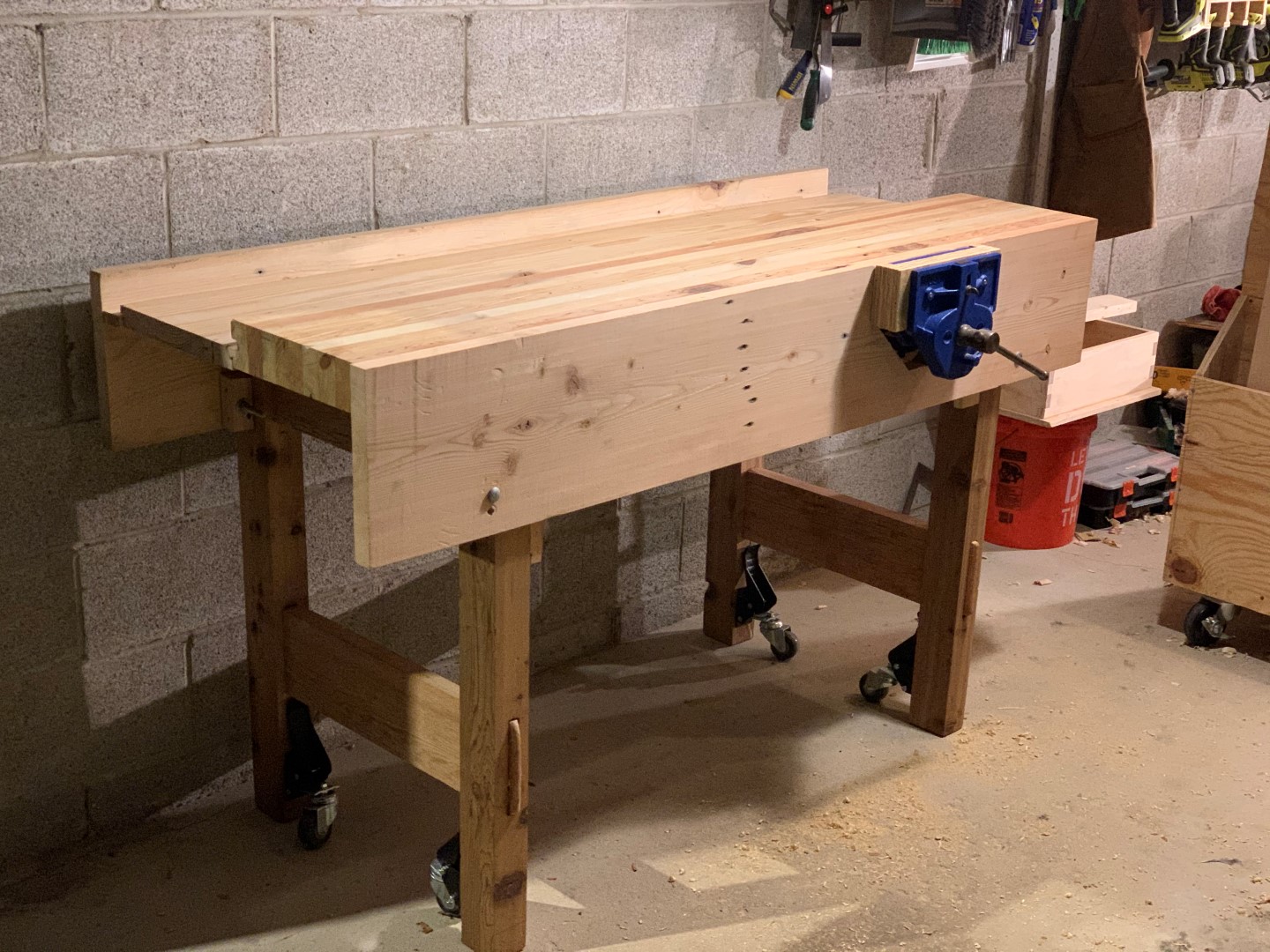
Final Thoughts
I'm incredibly happy with how the workbench turned out. It has its imperfections - like anything in this world - but as I run my fingers over the scarred but smooth surface of the benchtop, I recall (now with fondness) each individual struggle those marks represent. There are so many things that I look forward to doing better (or simply differently) the next time I build this bench or really anything involving similar techniques, it just illustrates how far I've come along the way to making it.

I hope you've enjoyed reading this along with the pictures of the workbench's construction. It's taken a couple of years, but I can finally and at long last say it:
I DID IT!
Photo by Wil Stewart / Unsplash

